The Sacred Valley - A 3-Day Itinerary & Photographic Travel Guide
Snow capped-mountains, as far as the eye can see; that’s the view from the plane window when flying over the Andes into Cusco. After seeing this, it’s easy to understand why this sliver of fertile land, nestled between Cusco and the world-famous Machu Picchu, was aptly named, The Sacred Valley.
Situated at a lower altitude than Cusco, this is the perfect place to acclimatize for at least three days before any strenuous hiking.
This travel guide and Sacred Valley itinerary includes six wonderful experiences that highlight the natural beauty, history and culture within the region. It also includes tips on where to sleep, what to eat and how to acclimate.
GO IF YOU LIKE:
MOUNTAINS | HIKING | LLAMAS | ANCIENT RUINS | EXPLORING VILLAGES | POTATOES
A 3-day Sacred Valley itinerary
Day 1: Visit Maras salt ponds and the terraces of Moray
Day 2: Visit the weaving community in Patacancha and eat a local meal
Day 3: Hike the ruins of Ollantaytambo, enjoy a Pachamanca
Expand the Legend on my map for the detailed itinerary.
My Favorite Things to do in the Sacred Valley
See How Salt is Made At the Maras Salt Ponds
The salt ponds of Maras are a spectacular sight. Over the last few years they’ve become increasingly popular and one of the main attractions in the region.
They’re hidden in a valley, so stopping at the top of the road, before entering, is a great way to appreciate their full scale.
While it’s not possible to walk freely among the ponds, there is a designated path to a selection of them which provides a closer view. Marvel at the fine detail in the crystallization of the salt.
The ponds are mostly white, but there are a few that take on light beige and pink colours from different minerals.
Many nearby, local shops sell salt or salted chocolate. These make great souvenirs. In fact Michelin Chef, Virgilio Martínez, loves using Maras salt.
Plan Your Visit to the Maras Salt Mines
Hours of Operation: Sunday - Saturday - 8am-5pm
Cost: 10 soles
Walk through the terraces of Moray
Right next to the salt ponds are the expansive Inca terraces of Moray.
Like many Inca ruins, they’re mysterious and open to scientific interpretation. So while its purpose isn’t known for sure, the main theory is that the Incas used the terraces to test different agriculture.
The reason for this, is that there is a 15°C difference from the bottom to the top levels. And since the Incas were known to be scientifically advanced for their time, I buy it.
Plan Your Visit to the Moray Terraces
Hours of Operation: All week - 7am-6pm
Cost: Included in the Boleto Turistico Delcusco
Try some ancient weaving in Patacancha
Close your eyes and picture Peru.
I’m sure part of what you saw were brightly coloured Peruvian outfits.
Since many garments sold in Peru are machine-made, it was a special moment to learn about traditional Peruvian weaving techniques.
After being graciously welcomed into the Patacancha community we were shown the process of creating the threads, dying them and weaving.
The entire experience is in the below article, which also includes a section on how to spot synthetic garments when shopping in local markets.
Eat a Pachamanca in Ollantaytambo
Would you believe me if I told you, the best way to cook chicken is in the ground?
Well that’s exactly what a pachamanca is.
The whole affair starts with scorching stones which are put in a pit. This is followed by meats (in our case it was chicken and lamb) and potatoes which are covered by more hot stones, local wild herbs, like Muña, and vegetables.
All this food is then wrapped up and covered by more rocks and finally… dirt.
The food cooks in its little grave for about 20 minutes. Once it’s done the process goes on rewind unearthing the feast.
The result is juicy meat with crispy skin and veggies with a fantastic smoky taste.
Oh, and in case you’re wondering, there was no dirt in my food.
The patchamanca itself was served at El Albergue, a farm in Ollantaytambo. The owners also have a hotel and both the farm and hotel are located right next to the train station.
The lunch experience includes a brief tour of the farmland and a chance to taste some homemade alcohol. This bartender liked to experiment.
Reserve your Patchamanca
Hours of Operation: Daily 11am, 1pm, and 3pm (reservations required)
Cost: $40USD/adult, $30USD/child
Explore the Inca Ruins of Ollantaytambo
Ollantaytambo is 2 hours by train from Machu Picchu but closer than Cusco. This makes it a great place to spend the night before any major hikes or visit to Machu Picchu.
The city itself has some fun activities, like a chocolate making workshop, the pachamanca and some impressive ruins to explore.
The ruins are located on the two surrounding mountainsides. The larger of the two ruins is an old fortress.
Another breathtaking hike is the qollqa (Quechua for storehouses) which are found on the opposite mountains from the fortress. This hike is steep, but the path is well made. From the storehouses there is an impressive view of the city and surrounding mountains. This is free to enter, just look for the small hidden entrance in the street closest to the mountain.
Plan a Visit to the Ruins of Ollantaytambo
Hours of Operation: Online says 7am-6pm (every day of the week) but we arrived at 5pm and it was closed. Early morning is better as most tourist groups start arriving around 11am.
Cost: Fortress included in the Boleto Turistico Delcusco. The qollqa visit is free.
Roam the Streets of Ollantaytambo
One of the greatest activities in Ollantaytambo is simply roaming the streets. The best part is that it’s completely free.
The city is small, making it impossible to get lost. The streets are built with large stones and lined with colourful houses. Exploring the city by foot gives a glimpse into the daily life of the families that live there.
Why I chose not to visit Rainbow Mountain
Rainbow Mountain has quickly become one of the major attractions in the Sacred Valley. Different mineral deposits have given an array of colours to mountain peaks, making it a highly sought-after photo opportunity. While I initially wanted to visit, I decided against it. Here’s my reasoning:
Time
This was the most important factor. Because of its remoteness, visits to Rainbow Mountain require almost a full day and a very early morning.
Rainy Season
Visiting in November is risky since it’s the start of rainy season. This means the terrain can be slippery and dangerous.
Acclimating
Rainbow Mountain is at a high altitude which means it’s not ideal to hike within the first three days of landing in the Cusco region.
Post-Processing
As a photographer, I understand the power of post-processing and it’s clear to see most advertised photos are heavily edited with highly-saturated colours.
With that being said, I’m not against the visit. I just made a conscious decision to see other things in my limited time.
Fill that Belly
The Sacred Valley is in the Andes, which means the cuisine is based around local ingredients like tubers (potatoes), beans, corn, trout (caught from the river) and meats like cuy (guinea pig), chicken and alpaca. Here are a few of my favourite meals.
Safety Tip
This is not the place to eat ceviche unless it’s trout. The Sacred Valley is far from the coast and refrigeration can be an issue. Save ceviche for the coastline cities like, Lima and Ica. For more tips on food safety check out my food guide to Peru.
KAMPU
Kampu is the answer to Asian-Peruvian cooking. The menu is filled with rich curries and Andean ingredients. The meals are hearty and colourful.
After eating traditional Peruvian food for a few days straight, this fusion was a welcomed change.
The head chef Eduardo is a funny guy, he’s incredibly welcoming and very proud of his food. The staff at Kampu makes sure to explain all the options on the menu. Both the food and service didn’t disappoint.
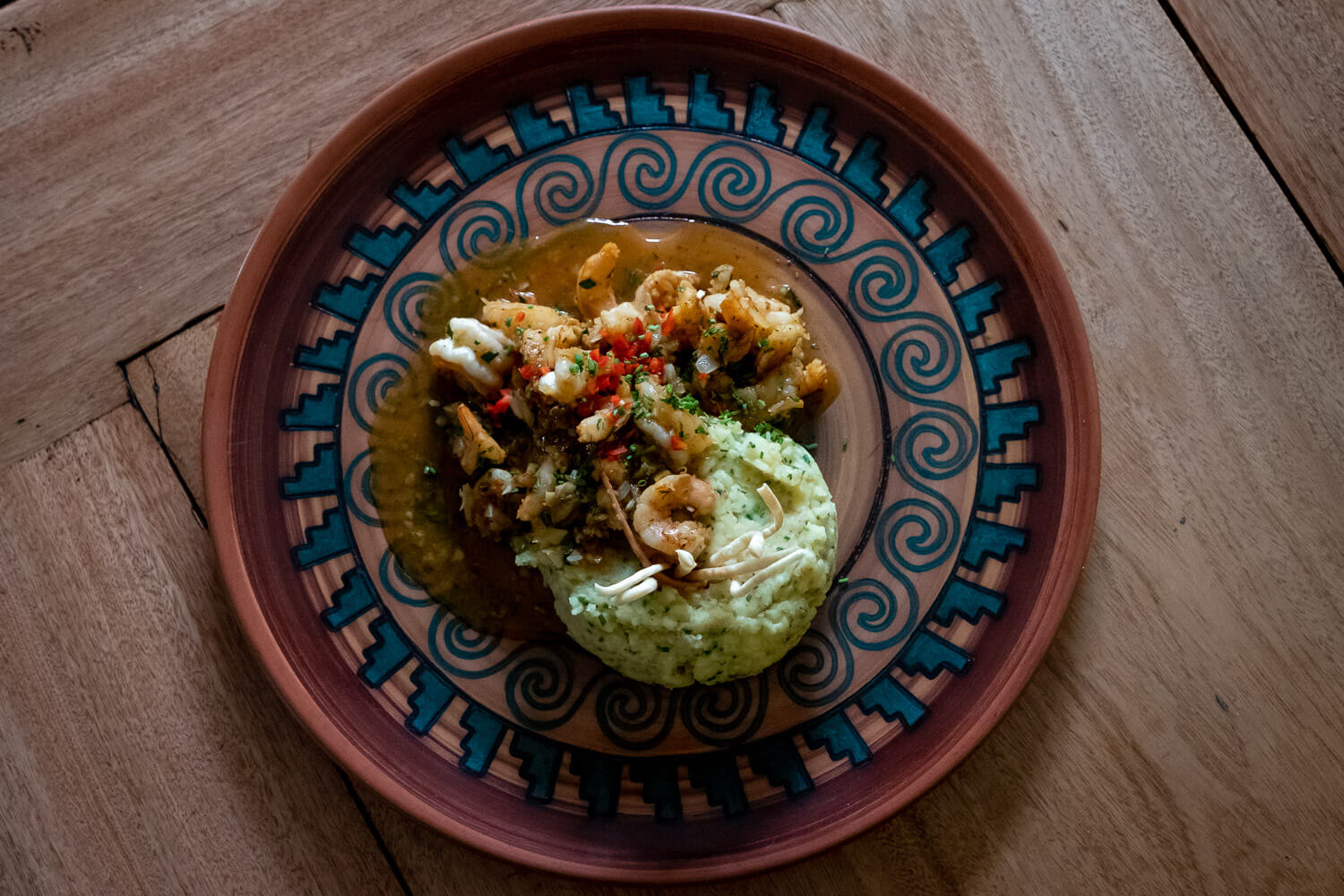

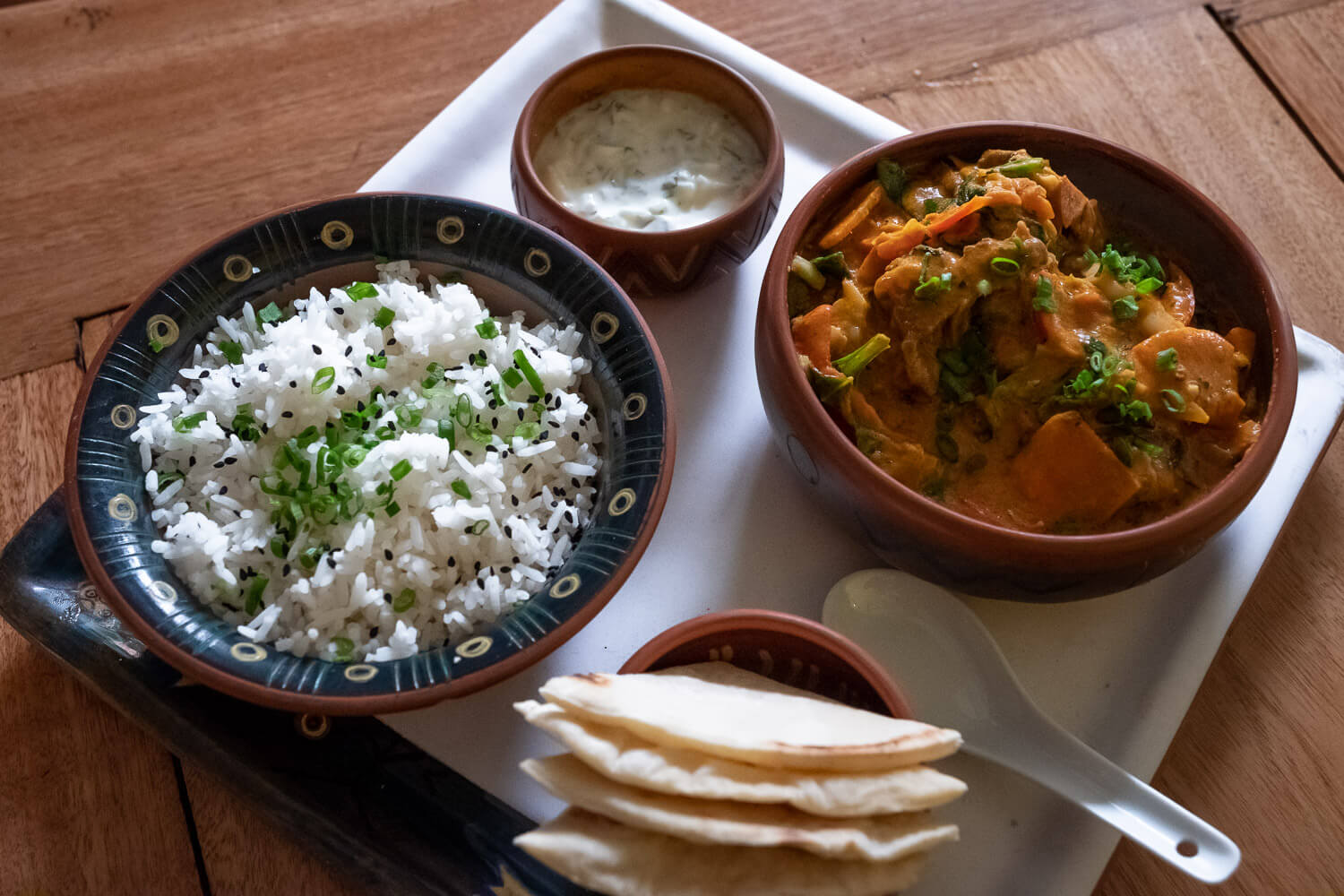
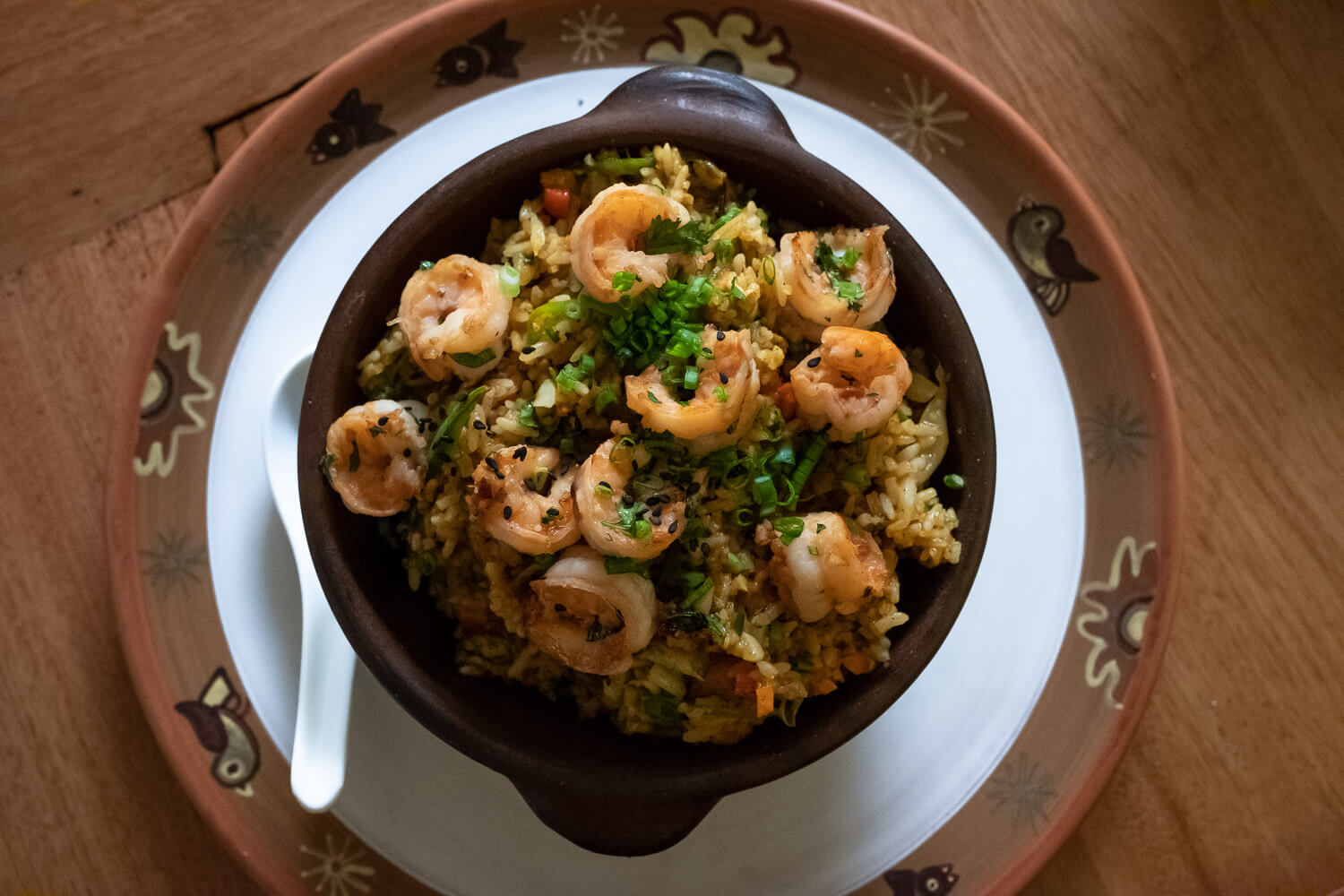
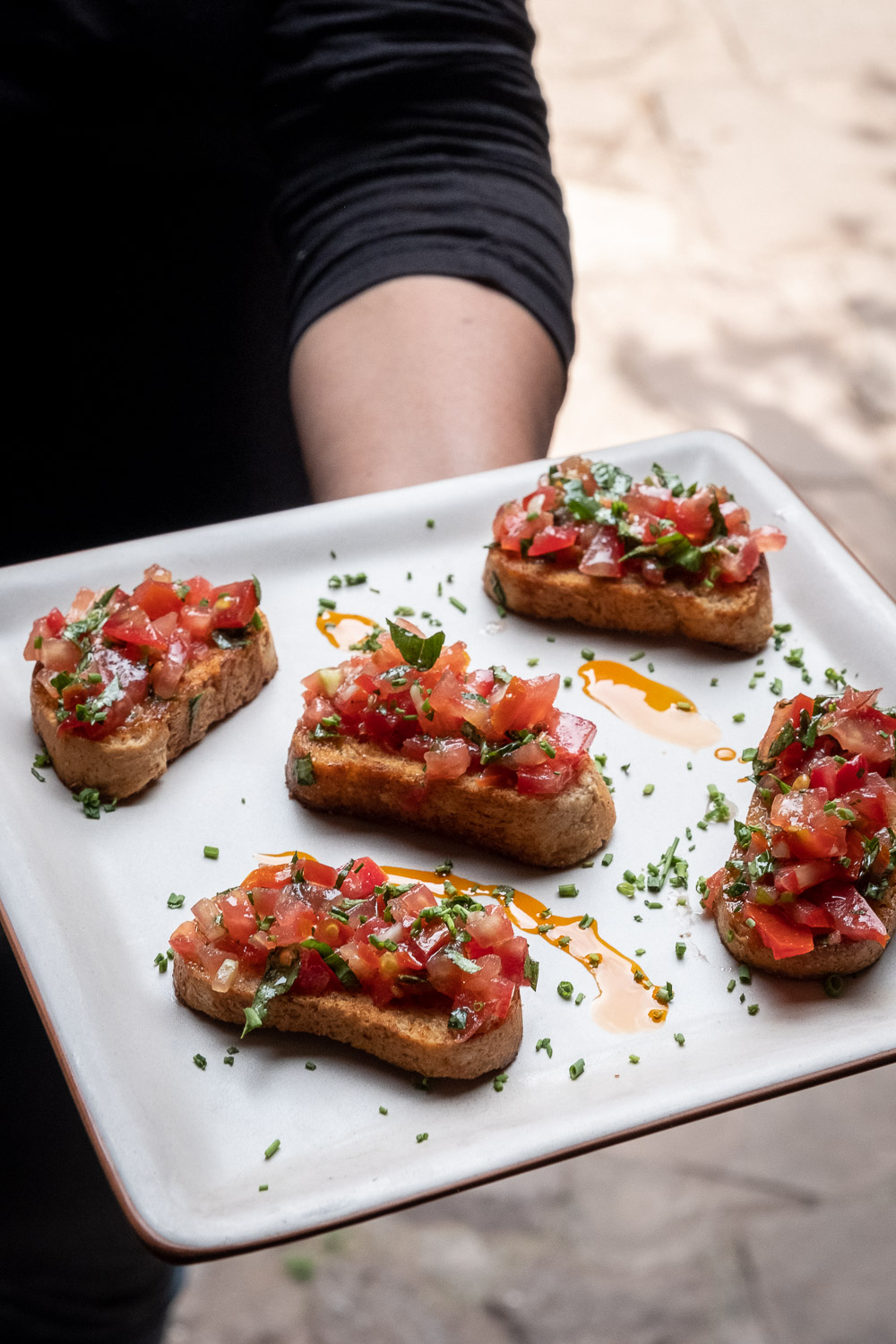
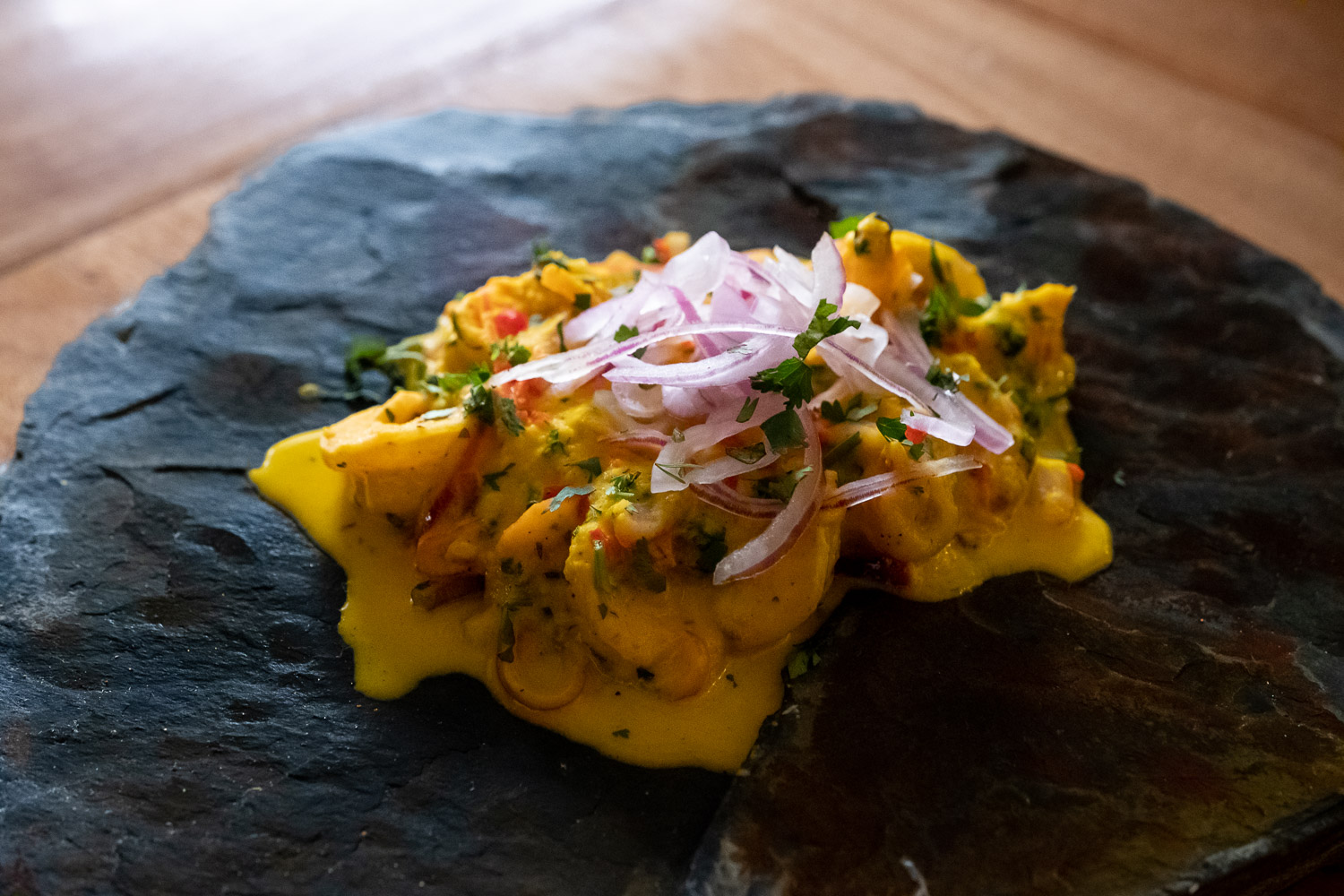
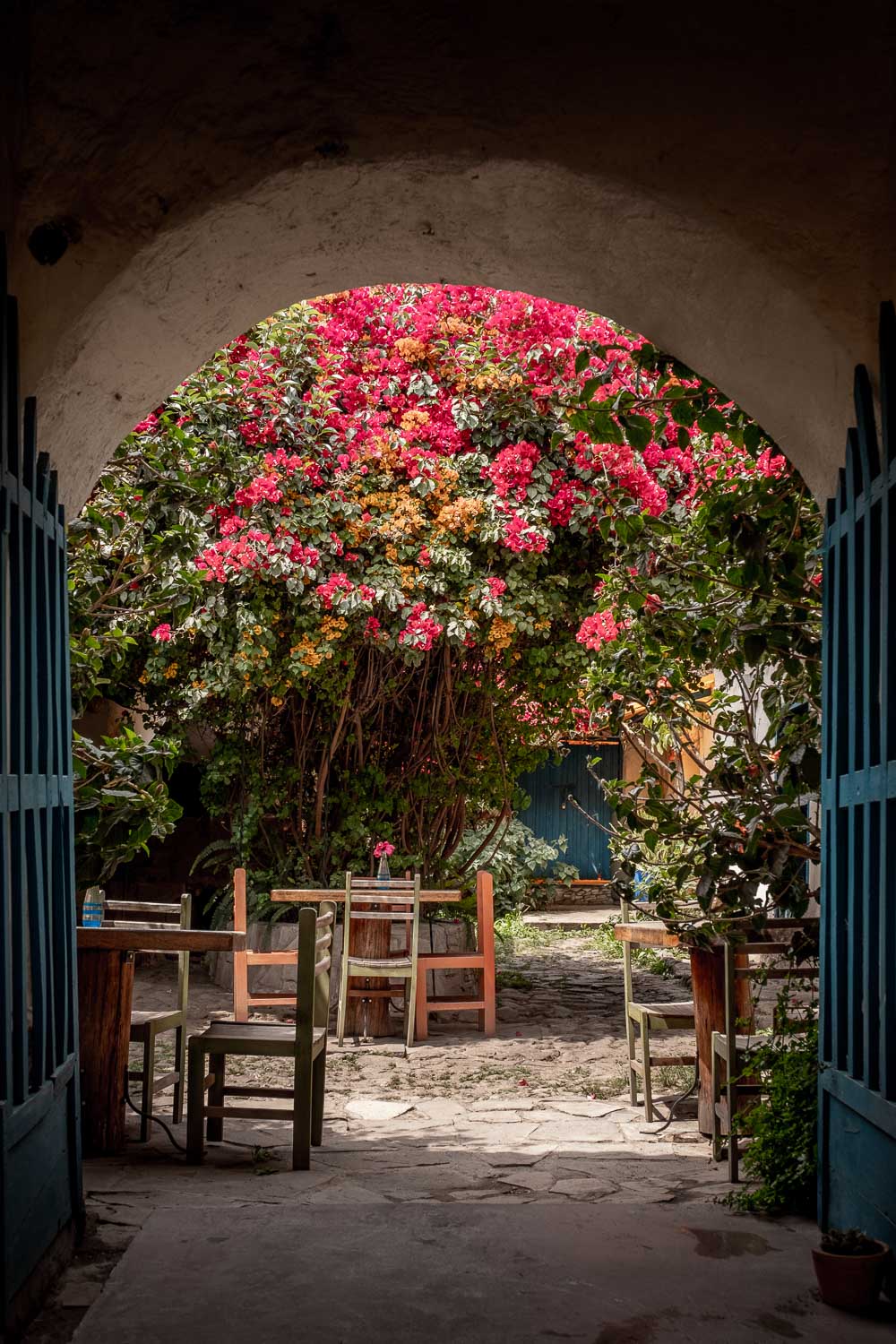
Chuncho
Chuncho is a restaurant run by the same owners of the pachamanca and farm at El Albergue. The cuisine here is traditionally Peruvian and made with local and fresh ingredients from the same farm.
There’s lots of great sharing plates, making it ideal for sampling new things. It’s the perfect place to enjoy a last meal before any hike to Machu Picchu.
They also serve up delicious cocktails, though be careful as alcohol can contribute to altitude sickness and being hungover for a hike is less than ideal.
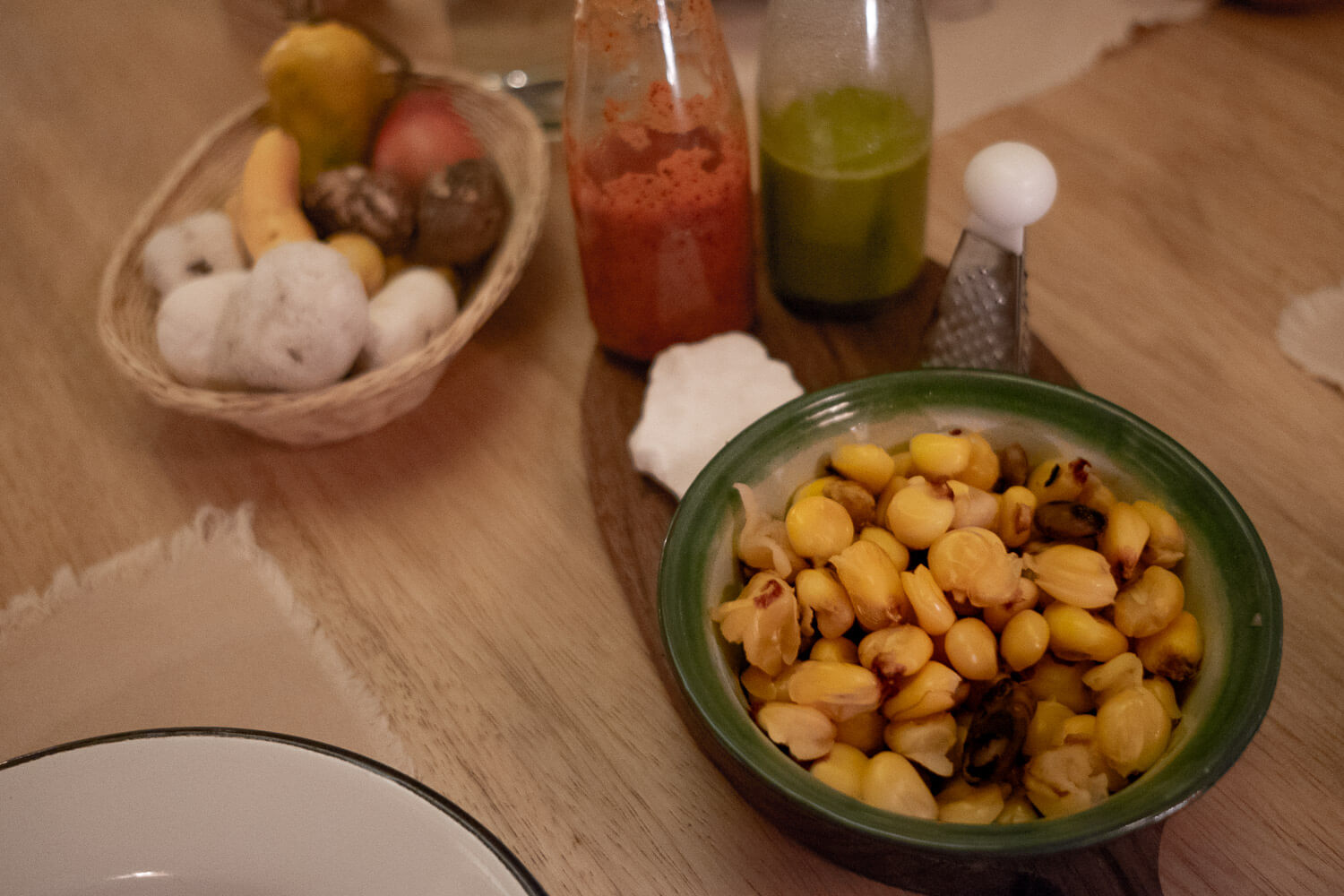
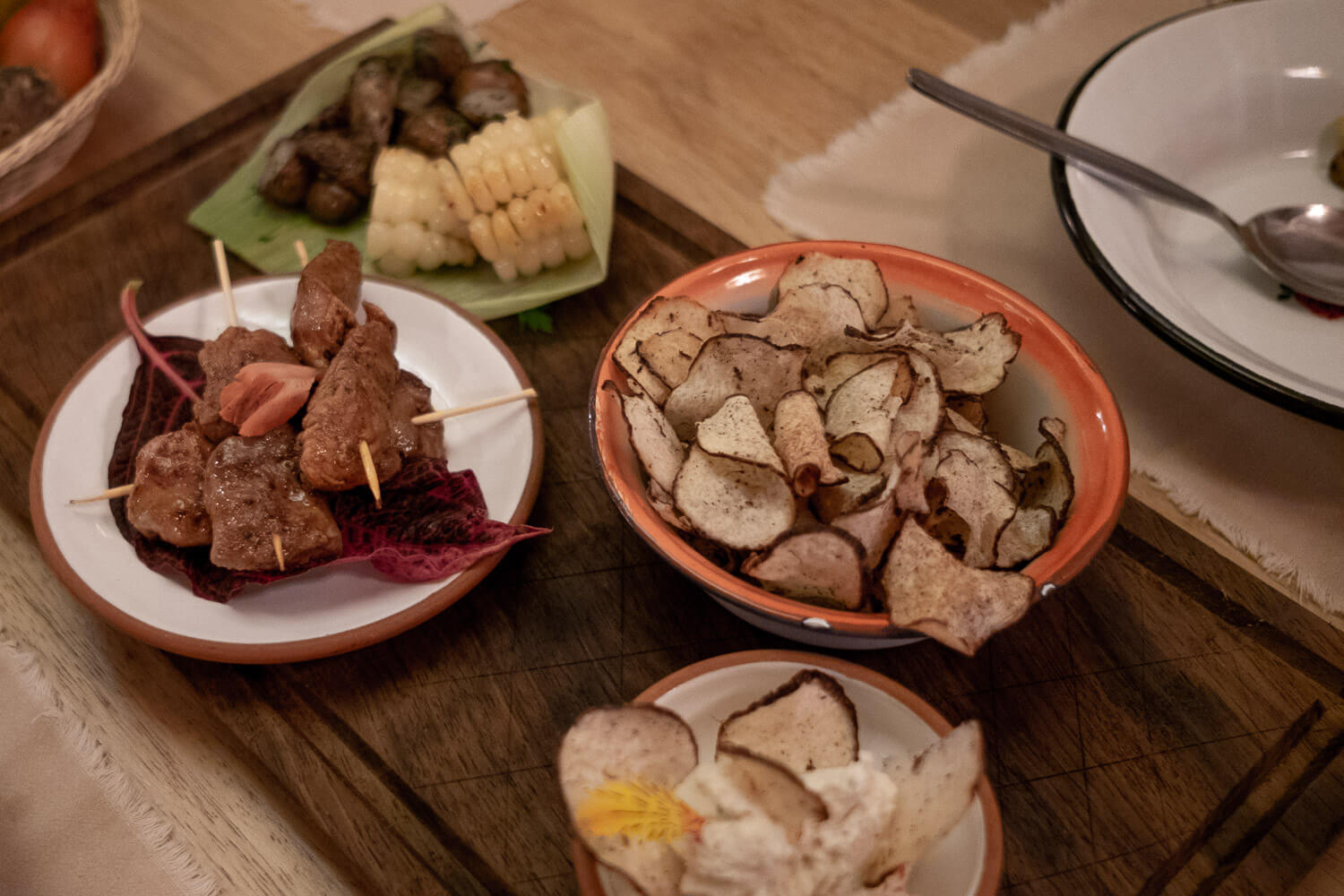
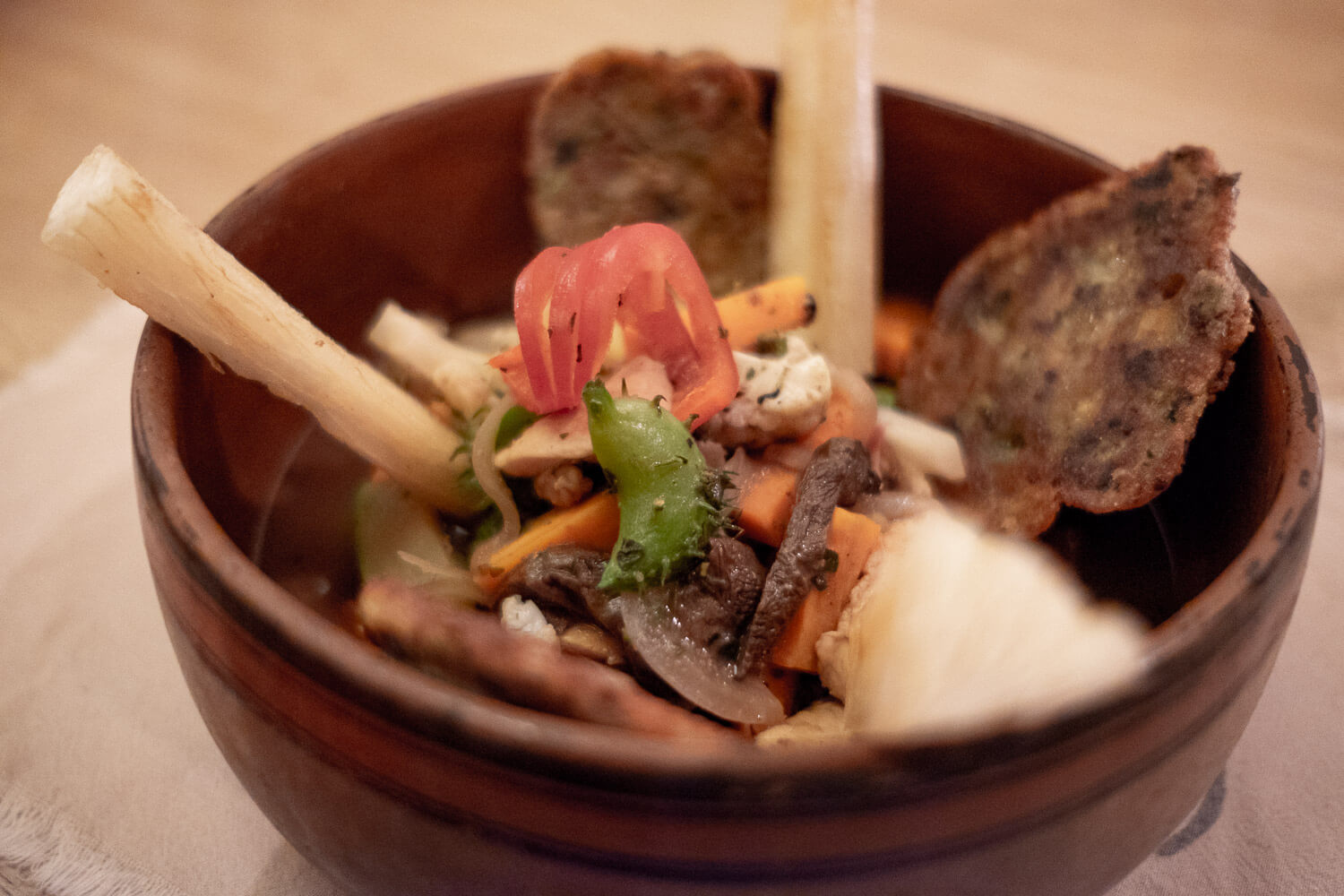
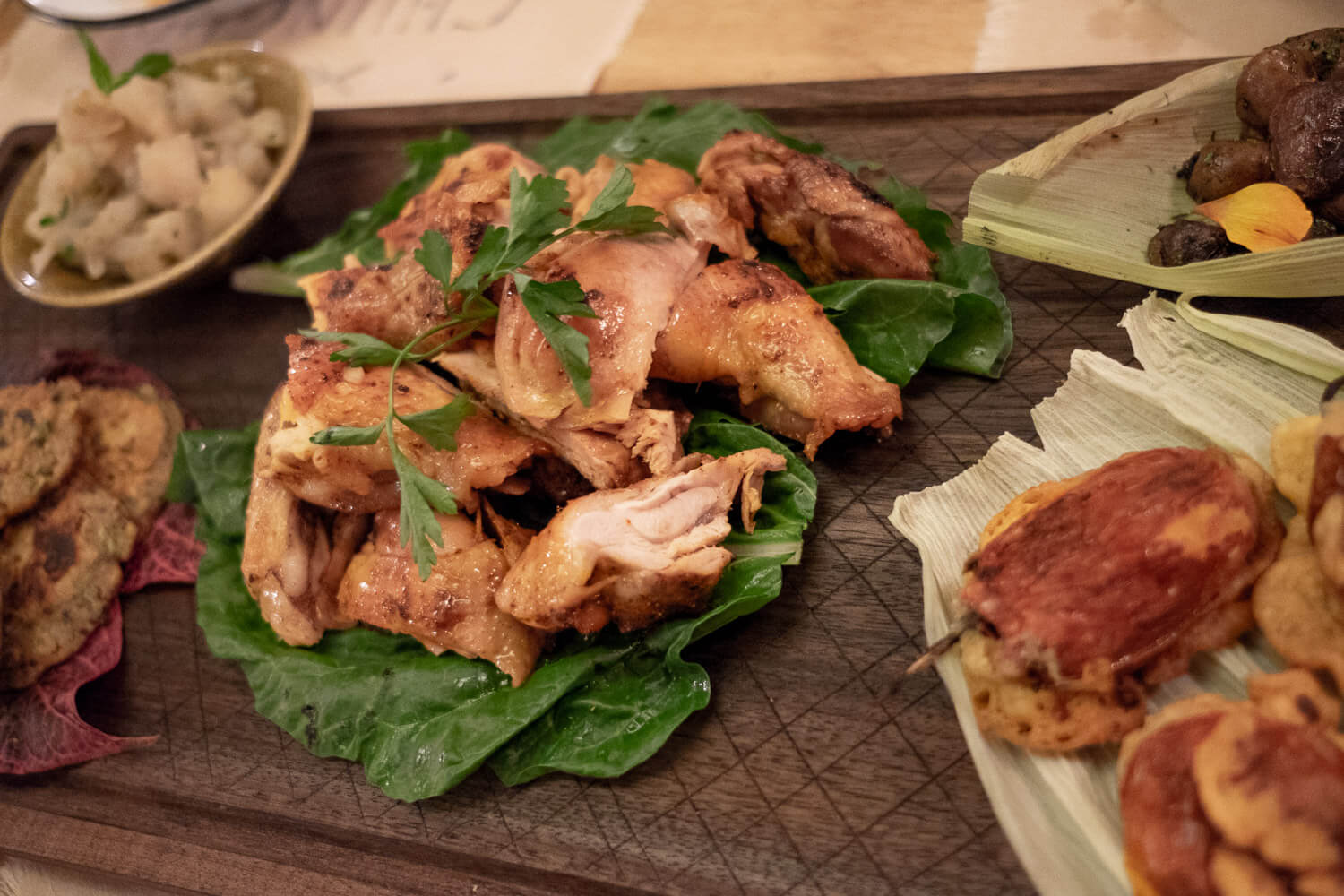
More restaurants in the Sacred Valley
Puka Pukara
A cozy restaurant in Urubamba that serves up a delicious trout burger.
Mamacha Juana Sopas y Guisos
This restaurant has juicy burgers and comforting soup in a bread bowl. It's got a great outdoor atmosphere and live music on some evenings. Don't forget a sweater, it gets chilly at night.Pachamanca at El Albergue Farms
This is an experience that shouldn't be missed and needs to be booked in advance.A Pachamanca at El Albergue Farms, Ollantaytambo.
Transportation in the Sacred Valley
To get to the Sacred Valley you need to fly into Cusco from Lima. Once you’re there the easiest thing to do is hire a private driver to take you to your hotel.
Sights within the Sacred Valley are spread out. Luckily private transport in Peru is affordable. A private driver can be booked through your hotel. You have the option for just a driver, or booking a driver and a guide. I recommend the later if you’re exploring the area and your budget allows for it.
Many drivers don’t speak much English and guides are more knowledgable about the Inca sights. Having a guide will give you greater insight into the history and culture of the area plus they’re able to help keep your itinerary on track and adjust for roadblocks.
I appreciated my guide, Carlos, who knew a lot about the Sacred Valley and Cusco. I initially booked him for one day and ended up using him for three. He’s offered 10% off his guide services to all my subscribers.
Within the city of Urubamba, you can use their taxis (tuk-tuks). The region is also filled with famous hikes so getting around by foot is popular.
Where to Stay in The Sacred Valley
Some links below are an affiliate link, meaning, at no additional cost to you, I will earn a commission if you click through and make a booking. As always, I only recommend products and services I trust.
There are several cities that can be used as a home base for exploring the Sacred Valley. The most popular city is Cusco, and while I enjoyed it very much I recommend staying in the Sacred Valley prior to visiting Machu Picchu, then going to Cusco afterwards. This itinerary will help with acclimatization.
Where to stay in Urubamba
I recommend Urubamba as a hub. It’s centrally located between Cusco and Machu Picchu and there are shops and restaurants within the town. Ollantaytambo is another option. It’s smaller, but there’s still lots to see and do.
Boutique Hotel Lizzy Wasi (Urubamba)
This hotel was a great find. The rooms were spcious and clean, the common areas were inviting. Every morning we were served a lovely breakfast. They also had hammocks, where we could relax and enjoy the surrounding mountains.Boutique Hotel Lizzy Wasi - Urubamba
Where to stay in Ollantaytambo
El Albergue (OLLANTAYTAMBO)
El Albergue is located right on the train track in Ollantaytambo. It has clean, eco-friendly rooms. The owners of this hotel also own the farm with the incredible Patachmanca. Prior to the visit I also received lots of help planning my itinerary and booking guides with guest services.How to Prevent Altitude Sickness
As someone who was paranoid about getting sick I can happily report that I was fine. With that being said I followed all the best practices and planned my two-week itinerary based on gradual elevation.
I had previous experience with headaches in the mountains of Colorado and I knew it would happen again if I didn’t prepare better.
Most important thing is to consult a doctor before your trip. If you’d like to receive my free guide with additional tips on preventing altitude sickness, subscribe to get the download.
Sacred Valley Photography Tips
The link below is an affiliate link, meaning, at no additional cost to you, I will earn a commission if you click through and make a purchase. As always, I only recommend products and services I trust.
The Sacred Valley offers something for every photographer. There’s epic landscapes, people and portraits and interesting daily life. Because of this, versatility is key. I shot everything with a 16-55mm (APS-C) zoom lens.
In the Andes, mornings tend to be misty and rainy season goes from November-March so weather-sealed gear is helpful.
Some sights require a hike to get to, in fact this region has some breathtaking hiking if you’ve got the time. My favourite hiking accessory is the Peak Design clip. It fastens on to my backpack and allows me to secure and release my camera easily, freeing up my hands.
Locals in the region are used to tourists and their cameras, but know that if you take pictures of them, they may approach you for money afterwards.
The lighting conditions for the weavers of Patacancha are a bit dark since the demonstration happens under a covered space. You’ll want to find ways to compensate for that lack of light.
My photos of the Maras salt flats were taken at sunset. Unfortunately the sun had set too much and lit up the back mountains but not the flats. First thing in the morning would likely give better light on the ponds.
Safety In The Sacred Valley
The Sacred Valley is generally the pit stop for most people visiting Machu Picchu. Because of this, pickpocketing and small scams are possible. When in busy areas and marketplaces, keep your valuables within sight. Know that if you snap pictures of locals, they may want money in return.
I never felt unsafe, but I attribute a lot of that to having a good driver and guide leading the way.
Need Help Planning?
Want to visit Peru but have no time to plan?
I can help you create your perfect itinerary.




















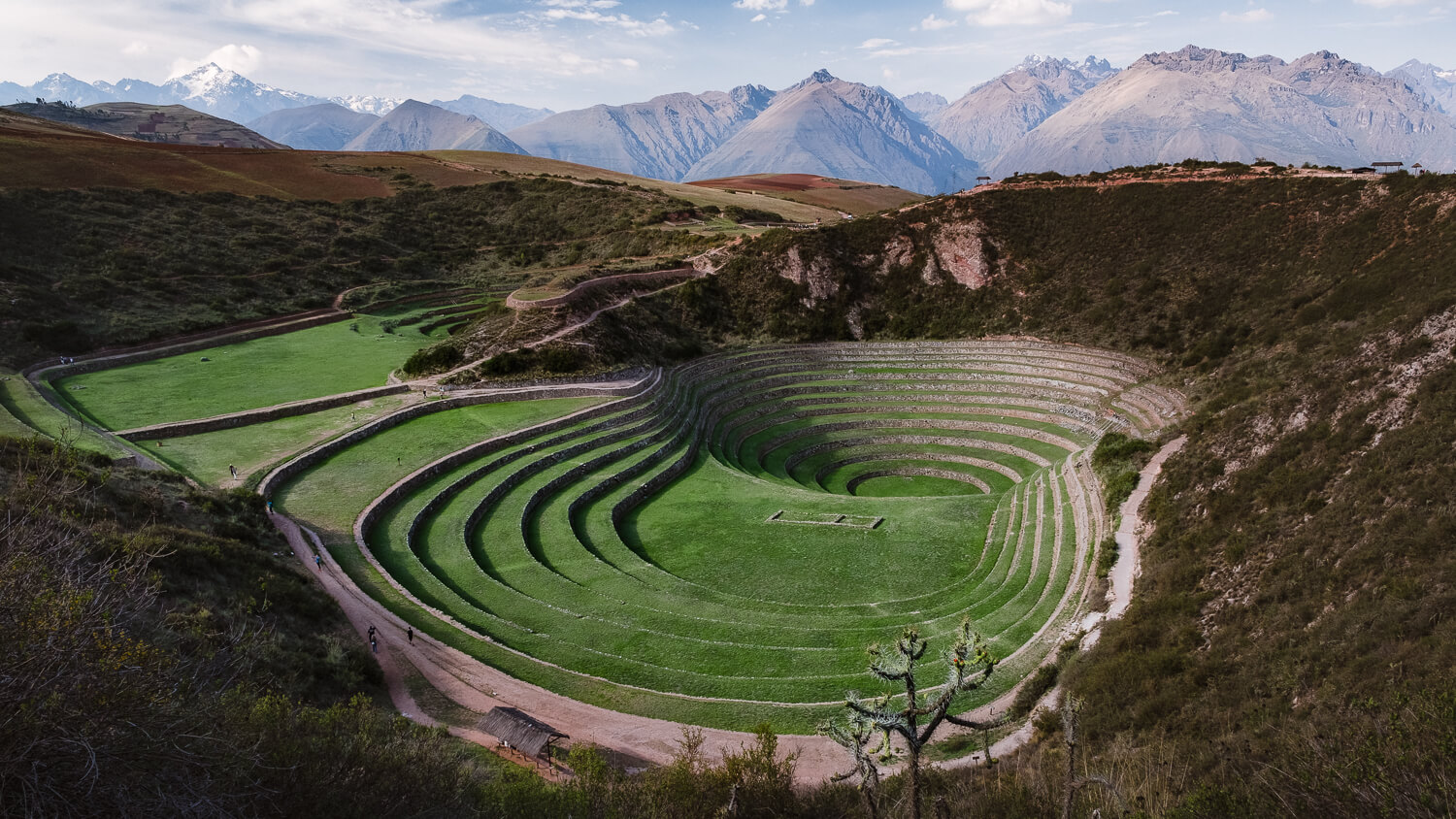










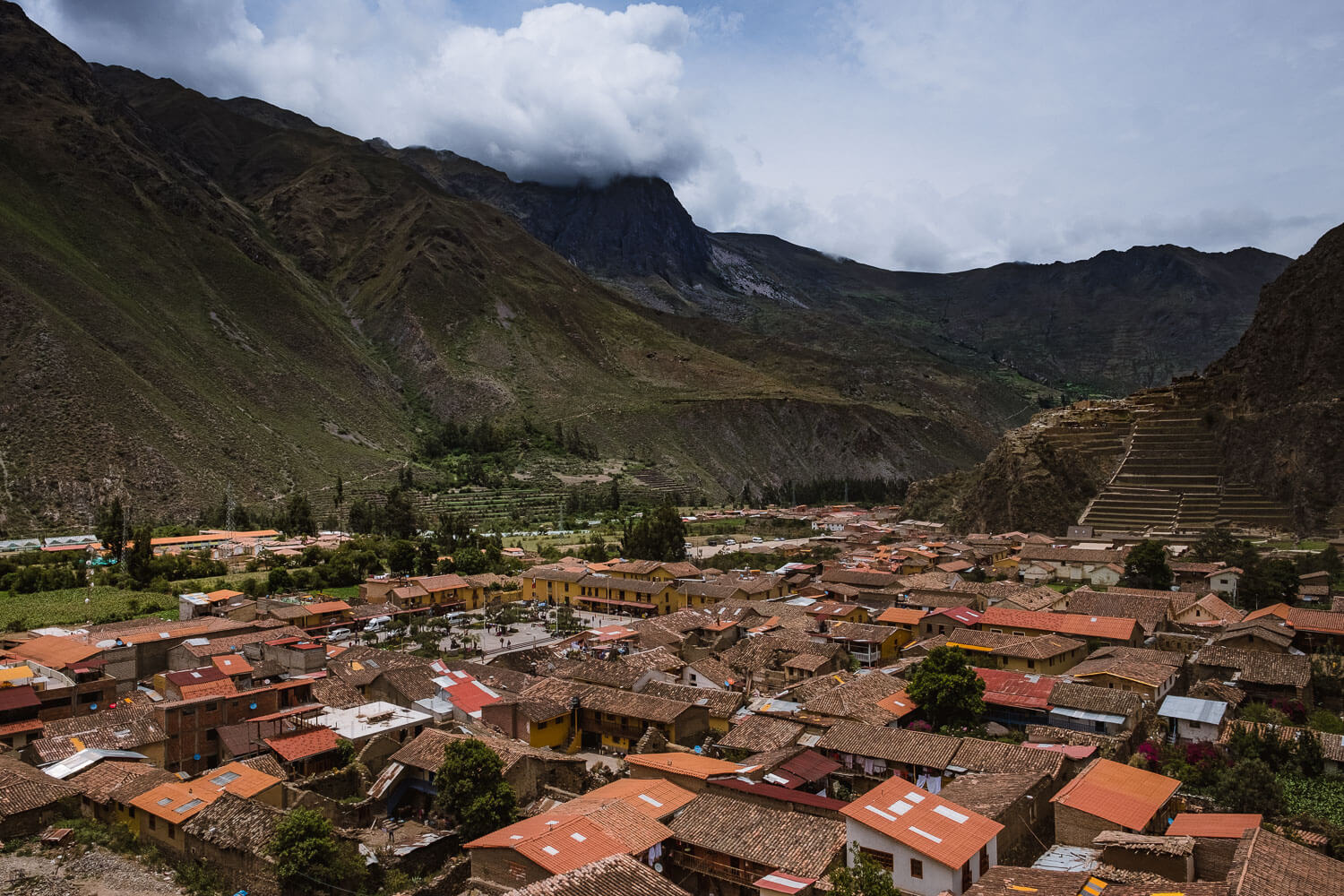




























I witnessed the talented Peruvian weavers of Patacancha, in the Sacred Valley. They shared their techniques and Inca traditions plus I learned how to spot synthetic vs. real garments in Peruvian markets.